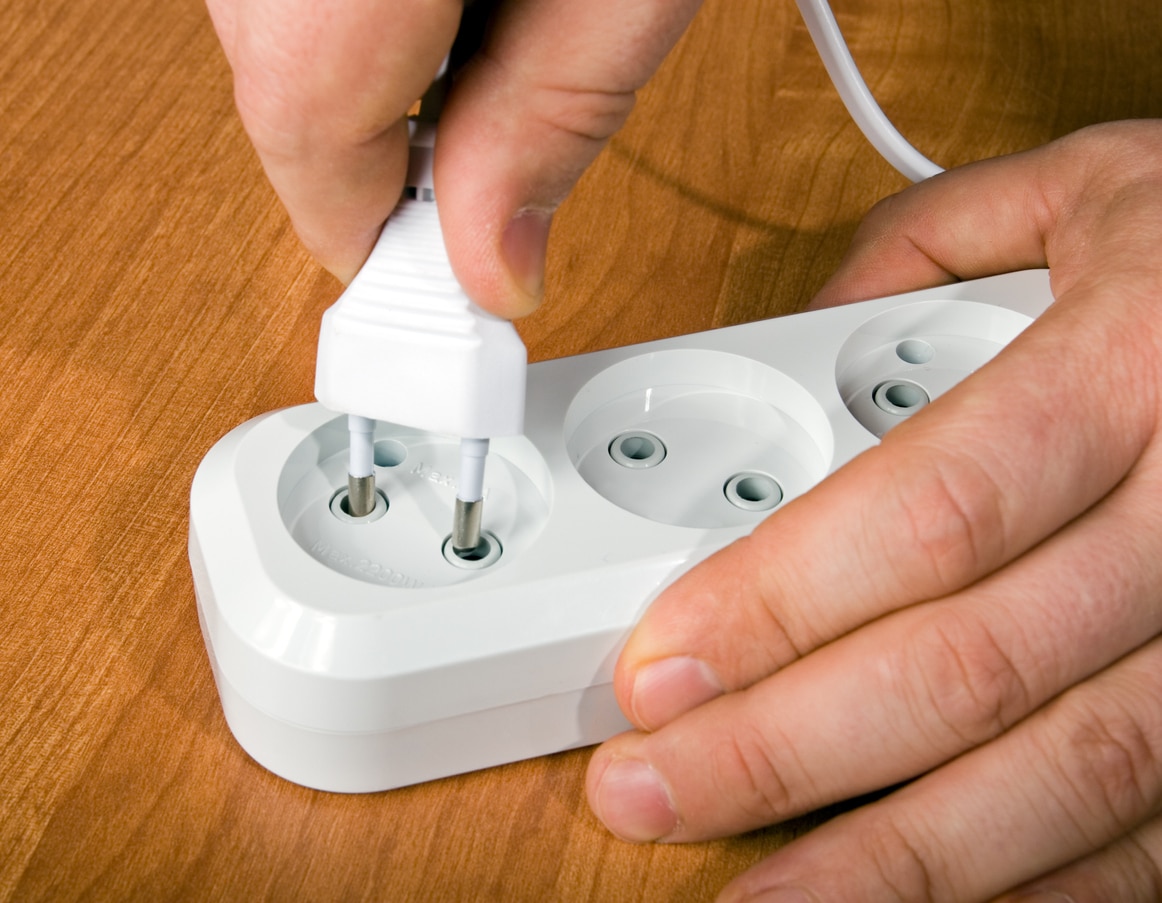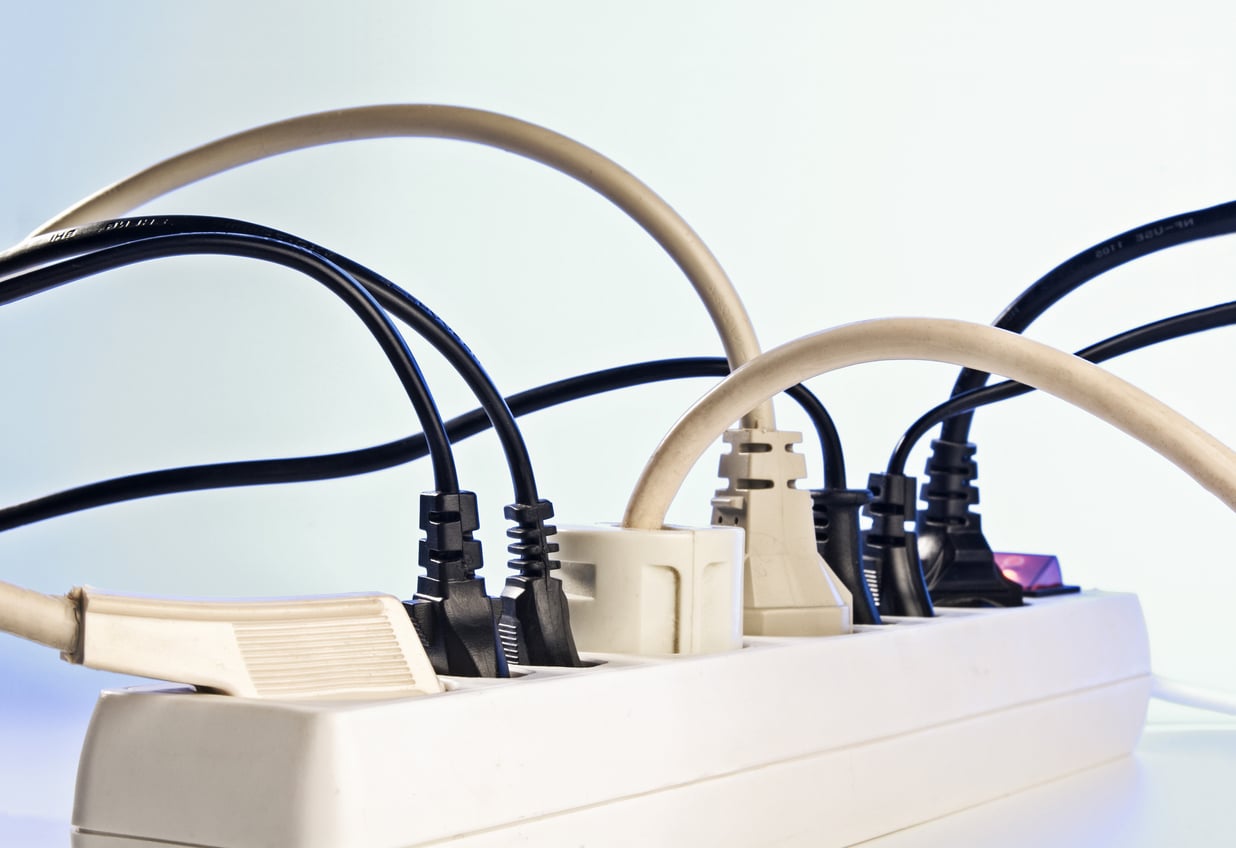In our interiors, electrical devices of all kinds are multiplying, making our lives ever easier. However, the number of sockets in a home are not unlimited. In this case, using a power strip can save the day, because it allows you to plug in several devices at once or serve as an electrical extender when necessary. However, this practical and economical tool presents some dangers and may in particular prove to be incompatible with certain household appliances which consume too much energy. Find out which devices should never be plugged into a power strip and why.
What are the dangers of a power strip?
When purchasing it is very important to consult the maximum power in watts (W) that the product can support. Then, you must compare this maximum power to the power of each device you plan to connect to it. If your devices are too powerful and energy-consuming, it can overheat and its electrical voltage increases dangerously. This can then damage your devices, cause a power outage, or even start a fire.
Let us remember that no less than 30% of fires have an electrical origin, and power strips are unfortunately no stranger to this. Indeed, even if it is supposedly fire-proof or has a switch, your power strip can catch fire in inadequate conditions of useespecially if it is dilapidated. These objects are also often placed in a corner with little ventilation and little visibility (therefore difficult to monitor) or near curtains, which increases the risk of fire.
Finally, a damaged product can cause electrocution in case of handling.

What devices should never be plugged into a power strip?
1) Connect another power strip: the mistake not to make!
In this configuration, the maximum power will be immediately exceeded, thereby increasing the risk of fire and electrocution. Cascade connection should therefore be banned without hesitation.
2) The refrigerator: too greedy
With consumption that revolves around 200 to 500 kWh per yearthe refrigerator is one of the most energy-consuming appliances in the house along with the freezer (small and large household appliances included). Knowing that in addition its connection is permanentit represents a certain danger and must therefore have its own wall outlet for optimal safety. If you still plug it into a power strip, you will reach the maximum power of the latter and will therefore not be able to multiply the electrical connections without risk. Its use would then lose all meaning!
3) Large household appliances, not ideal in general
Whether it is the washing machine, the oven or the dryer, the average consumption of this type of appliance is very high. For example, a washing machine consumes on average 191 kWh per year, or more depending on the models. Just as with the fridge or freezer, it is therefore better to provide an individual wall outlet in order to minimize the risk of dangerous overheating.
4) Additional heating or electric heating
Additional heating, like electric heating, has no place on a power strip or extension cord. These devices consume too much energy. Additionally, these units are not designed to handle the high current flow necessary for this type of installation to function properly. Because of the flow of energy, risks of overheating and starting fire are very high.
5) The coffee maker, to plug in elsewhere as well
Small household appliances can also be very energy intensive. This is particularly the case with the coffee machine which is also used several times a day, leading to the risk of overheating.
6) The microwave
Just like coffee makers, microwaves have no place on your power strips, as they also consume a lot of energy. This is all the more true for devices equipped with a grill function which consumes a lot of resources.
7) The toaster
Beneath his cheerful appearance, your breakfast and snack ally also consumes a lot of energy. Also, it can be dangerous to plug it into one of your power strips and thus multiply the connections.

Normally, the use of power strips is temporary. If you cannot do otherwise, at least be sure to respect power standards and turn them off or unplug them when not in use. Also remember to place them in a clearly visible corner away from the curtains. And above all, change them when they show signs of wear or become too old (old power strips no longer necessarily meet safety standards). Furthermore, don’t forget to dust them: it’s not a luxury! Finally, install a smoke detector and possibly provide a fire extinguisher to be ready in the event of a problem!


